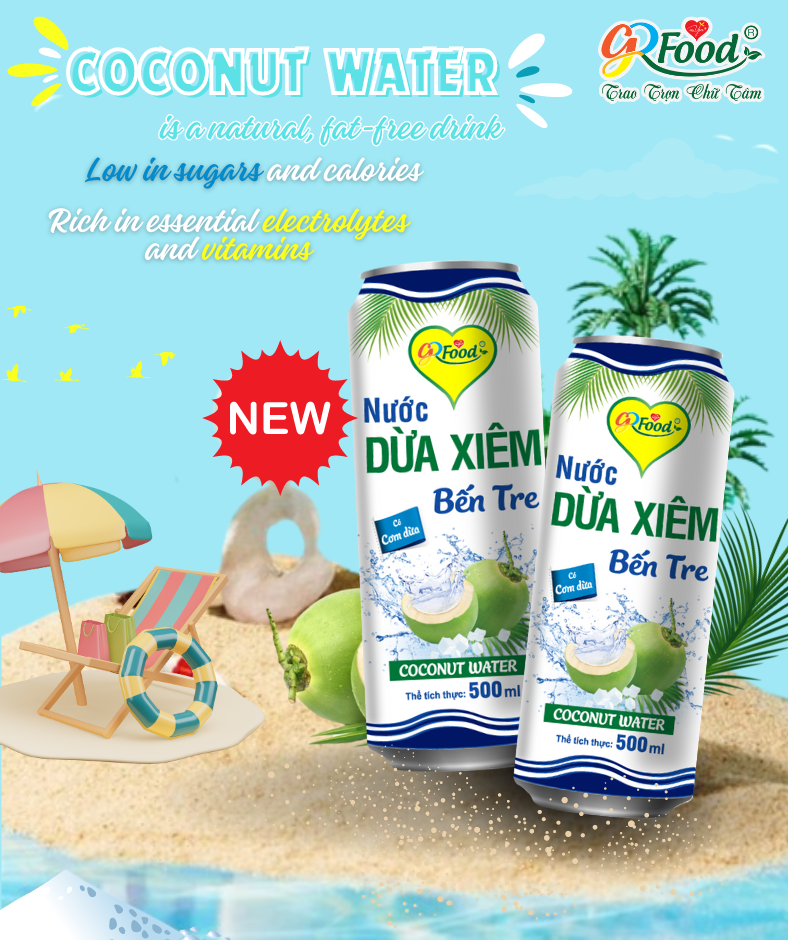Fresh coconut water is one of the most popular natural drinks thanks to its rich nutritional content and great health benefits. Not only is it a natural thirst quencher, coconut water also contains many important nutrients that help improve overall health. Join Green Food to learn about the chemical components in fresh coconut water and their benefits for the human body:
|
Nutritional composition |
Functions |
|
Carbohydrates: Mainly simple sugars such as glucose, fructose and sucrose |
Provides quick energy to the body |
|
Electrolytes1: Potassium, sodium, magnesium, calcium |
Maintains electrolyte balance and supports muscle function |
|
Vitamin C2 |
Boosts the immune system, creates collagen for firm and healthy skin, bones and joints. As an antioxidant, it detoxifies pollutants and protects people from cancer and heart disease. |
|
Vitamin B1 (thiamin)2 |
Energy production, brain function and digestion |
|
Vitamin B2 (riboflavin)2 |
Maintains healthy skin, hair, nails and eyes. |
|
Vitamin B3 (niacin)2 |
Energy production, brain function and skin rejuvenation. Balances sugar levels and lowers cholesterol |
|
Vitamin B6 (Pyridoxine)2 |
Beneficial for digestive system and brain function and hormone production. Helps balance sex hormones, acts as an antidepressant and diuretic |
|
Vitamin B9 (Folates)2 |
Helps develop the nervous system and nerves during pregnancy, as well as the formation of red blood cells. |
|
Essential Axit amin3 : Histidine, Isoleucine, Leucine, Lysine,… |
Supports muscle building and recovery |
|
Antioxidants: total phenolic content4 |
Protect cells from free radical damage |
Fresh coconut water is not only a delicious refreshing drink but also brings many significant health benefits. Add coconut water to your daily diet to enjoy these wonderful benefits!

Product Ben Tre Coconut Water 500 ml aluminum can
(1) Tan et al.,2014
(2) :USDA National Nutrient database
(3) Souci et al,. 1990
(4) Appaiah et al., 2014